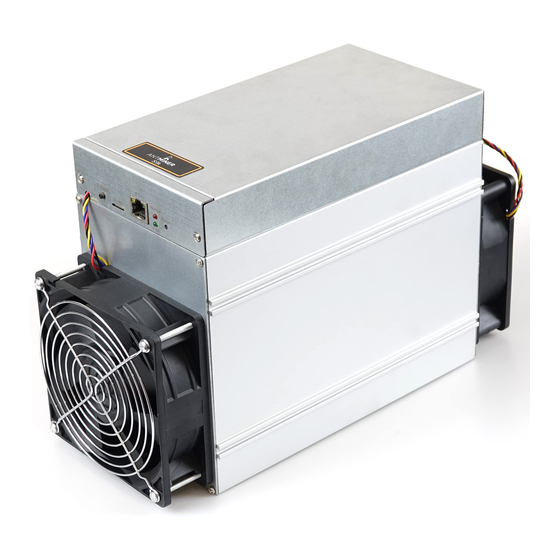ASIC Bitmain Antminer S9SE Maintenance Manual - Page 11
Browse online or download pdf Maintenance Manual for Desktop ASIC Bitmain Antminer S9SE. ASIC Bitmain Antminer S9SE 13 pages.

●PCBA label diagram
Reference steps:
Observe the
appearance
Measured
impedance
Measuring
voltage
1. Routine testing: First carry out visual inspection of the computing board to be repaired to see if there is displacement, deformation, burning of small
cooling fin? If there is such phenomenon, it has to be processed first; if the small cooling fin is displaced, remove it first and then clear the black adhesive,
and then re-adhesive after repair.
Secondly, after it's confirmed no problem visual inspection, the impedance of each voltage domain can be detected first to detect whether there is a short
circuit or an open circuit. If found, it must be handled first.
Next, check whether the voltages in each voltage domain reach 1.6v, and the voltage difference between the voltage domains must not exceed 0.3V. If the
voltage in a voltage domain is too high or too low, the circuits in the adjacent voltage domain generally have abnormal phenomena, and it needs to find the
reason first.
2. After confirming there is no problem in the routine test (short circuit detection is necessary in routine test to avoid burning the chip or other materials due
to short circuit when it's power-on), a test box can be used for chip detection, and the detection results of the test box can be used to judge the location.
3. According to the result of the test box detection, start from the vicinity of the faulty chip, and detect the voltage of the chip test point (CLK IN OUT/RI IN
OUT/CO IN OUT/BO IN OUT/NRST IN OUT) and LDO 0V8 1V8.
4. According to the signal flow direction, the RI signal is reversely transmitted (U60 to U1 chip), and several of the signals CLK CO BO NRST are
transmitted forward (U1-U60), and an abnormal fault point is found through the power supply sequence.
5. When locating to the faulty chip, the chip needs to be rewelded. The method is to add a flux around the chip (preferably no-clean flux), heat the solder
joints of the chip pins to a dissolved state, gently move up and down, left and right, and press the chip; promote the chip pins to joint the bonding pad again,
collect the tin, so as to tin again. If the fault is the same after re-welding, the chip can be replaced directly.
6. After the repair of the computing board, the test box must be checked for more than twice. The time of the two tests: For the first time, after replacing the
parts, the computing board needs to be cooled down; after passing the test, it is put aside first. For the second time, after the computing board is completely
cooled after a few minutes, the test is performed. Although each of the two tests lasts only a few minutes, it does not affect the work. The repaired board is
put aside, and the second board is repaired, after the second board is repaired, it is placed and cooled, then the first board is tested. In way, the repair is
staggered and there is no delay in the total length of time.
7. For the repaired board, first it is necessary to classify the faults and record the replaced part model, location, and cause, to feed back to production, after-
sales, research and development.
8. After recording, install the whole machine for normal aging.
● Description of chip correspondence
IV. Routine Maintenance Process
Check each test
Jig
point
Voltage and
Test
power supply
Conduct related aging
after it's ok
According to
the detection
information
Locate fault
Record the
fault type
11
S9k S9SE Maintenance Guide
Locate the chip,
reweld first, and
replace if reweld is
noneffective
Repair is
finished if it's
ok in two tests
